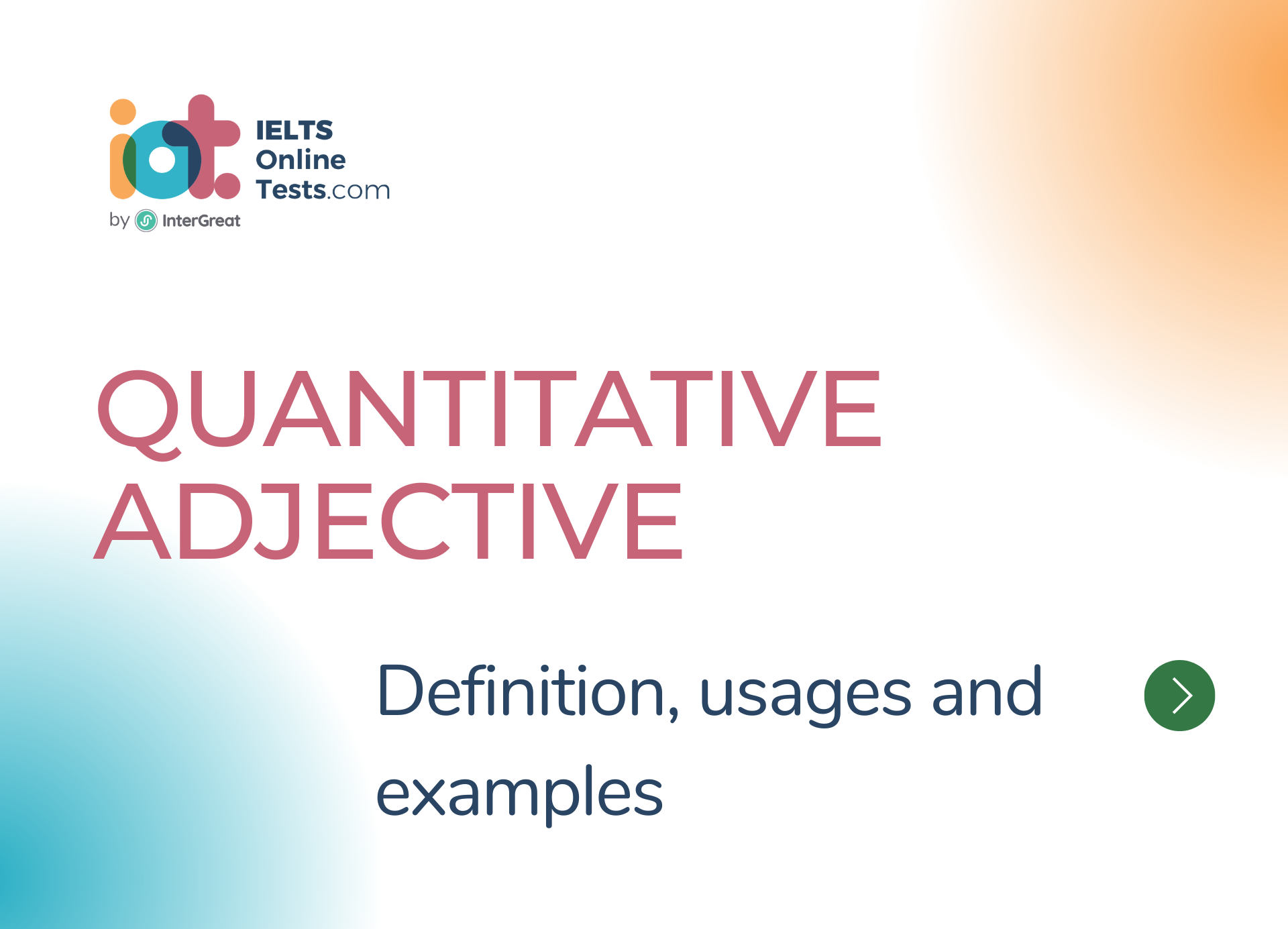
Quantitative Adjective definition, usages and examples
Quantitative adjectives, as the name suggests, are adjectives that express quantity or provide information about the number or amount of a noun. They answer questions like "how much?" or "how many?"
Here are some key points about quantitative adjectives:
Definition: Quantitative adjectives modify nouns by providing information about their quantity or number.
Types: Quantitative adjectives can be divided into two main categories: definite and indefinite.
Definite Quantitative Adjectives: Definite quantitative adjectives indicate a specific or exact number or amount.
- Examples: one, two, three, four, five, ten, hundred, thousand.
- One: "I have one book on my shelf."
- Two: "There are two apples in the basket."
- Three: "He scored three goals in the match."
- Four: "There are four chairs around the table."
- Five: "She has five siblings."
- Ten: "I need to buy ten pencils for school."
- Hundred: "The store sells hundreds of products."
- Thousand: "The city has thousands of residents."
- Examples: one, two, three, four, five, ten, hundred, thousand.
Indefinite Quantitative Adjectives: Indefinite quantitative adjectives give a general or approximate idea of the number or amount without specifying an exact quantity.
- Examples: some, any, several, few, many, much, most, all.
- Some: "Would you like some cake?"
- Any: "Do you have any questions?"
- Several: "There are several options to choose from."
- Few: "There are few people at the beach today."
- Many: "He has many friends."
- Much: "There isn't much time left."
- Most: "She ate most of the pizza."
- All: "They drank all the water."
- Examples: some, any, several, few, many, much, most, all.
Use with Countable Nouns: Definite quantitative adjectives are typically used with countable nouns that can be expressed in singular and plural forms.
- Examples: two cars, five books, three cats.
Use with Uncountable Nouns: Indefinite quantitative adjectives are commonly used with uncountable nouns that cannot be expressed as discrete units.
- Examples: some water, much sugar, a little patience.
Comparison: Quantitative adjectives can also have comparative and superlative forms to compare quantities.
- Examples: more, less, most, fewest.
- More: "She has more money than I do."
- Less: "He had less homework today."
- Most: "This is the most challenging task."
- Fewer: "There are fewer students in the classroom."
- Fewest: "She has the fewest books among her friends."
- Examples: more, less, most, fewest.
Placement: Quantitative adjectives generally come before the noun they modify.
- Examples: two dogs, many people, several books.
Agreement: Quantitative adjectives do not change in form to agree with the noun they modify.
Use in Questions: Quantitative adjectives are often used in questions to inquire about the amount or number of something.
- Examples: How many students are there? How much money do you have?
Quantitative adjectives help provide specific information about the quantity or number of nouns. They contribute to the precision and clarity of language when expressing amounts or quantities. By using quantitative adjectives appropriately, you can convey the desired level of detail and enhance the meaning of your sentences.




